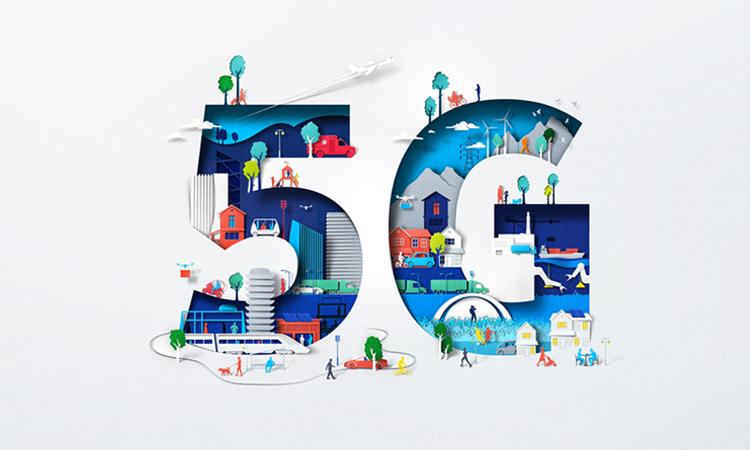Forecast: 5G to generate $7trn in 2030
August 18, 2022

5G is set to generate $7 trillion (€6.9trn) of economic value in 2030, as it fuels a proliferation of connected devices from smartphones to consumer electronics to enterprise applications and beyond, according to a report from mobile and video technologist InterDigital.
The State of 5G Report: Enabling the Boundless Generation, written by ABI Research, explores what’s next for 5G, what new types of advanced applications it will enable in the future, and what the mobile industry can do to support development in both the consumer and enterprise domain. The report examines the expectations of telecom operators and brings into focus 5G as a necessary capacity booster for cellular networks, as operators look to capitalise on the latest generation of cellular technology to maintain and grow their profitability.
The report discusses the impact 5G is likely to have on the evolution of the mobile industry, particularly as it continues to enable new innovative services like AR/VR and immersive content. 5G is also starting to introduce advanced enterprise enabling features, including low latency, deterministic networking, and advanced Internet of Things (IoT) use cases, all of which are new in the mobile network domain. Industry stakeholders have expressed high hopes for the upcoming wave of 5G services, which will likely enhance productivity and efficiency through mobility, among other improvements.
Key insights:
- 5G would not be possible without contributions to 3GPP, the 3rd Generation Partnership Project. Comprised of seven organisational partners that are standards development organisations from North America, Europe, Japan, Korea, China, and India, 3GPP collaborates to produce global technical reports and specifications on how next generation networks should be built and implemented;
- The adoption of 5G is outpacing all previous generations of cellular technology in terms of subscription rate and operator rollout, and is gaining significant traction from enterprise verticals;
- ABI Research calculates that 5G will create $7tn worth of economic value in 2030, 12 years after the official 3GPP standard was published;
- Organisations that have significantly invested in the research for 5G are projected to sustain that investment well into the future highlighting the continued interest in the commercial relevancy of the technology;
- The private 5G addressable market is expected to grow at an exponential rate, mostly driven by verticals including energy and utilities, healthcare and manufacturing;
- While the technology promises to support data-hungry and latency-sensitive applications such as AR/VR, the appetite for such services has not yet fully emerged, with new concepts such as the Metaverse being a more distant future vision;
- 5G can be seen as transformative in supporting the roll-out of digital spaces, smart cities and smart public services, and to enable all of this, governments and local authorities must remove the barriers to ubiquitous 5G access; and
- The next stage of 5G evolution defined by 3GPP as 5G Advanced will begin in Release 18 and introduce Artificial Intelligence/Machine Learning (AI/ML) for New Radio (NR) and NG-RAN, foster Non-Terrestrial Networks (NTN) and MIMO enhancements, and support Sidelink, unmanned aerial vehicles (UAV), reduced capacity (RedCap) devices, quality of experience (QoE) and, XR services, among other new features that enhance mobile networks, private enterprise networks and consumer applications.
“The time we live in is an exciting inflection point for 5G and the way telecommunications networks are built and consumed,” said Dr Rajesh Pankaj, Chief Technology Officer, InterDigital. “As 5G deploys across the world, it’s helping to solve fundamental challenges, and laying the foundation for experimentation, new ideas, and innovation. At the same time, 3GPP and the 5G supply chain are continuously working to progress 5G even further.”
“The early years of 5G have been foundational to its long-term success,” Pankaj continues. “Now is the time when we will experience and benefit from exciting new applications, new use cases and many more ways consumer lifestyles can be transformed.”
According to the report, the prospect for operators looks promising, as they witness the exponential rise of 5G and its growth opportunities – especially as 5G is set to support a wide range of revenue generating, mission critical applications. Many operators and their partner suppliers are finding ways to develop new and better features in support of the network performance capabilities needed to realise the potential of 5G networks and its economic benefits.
“5G is now giving us a glimpse of what will be possible in the future and setting the foundation for the next generation of networks,” said Dimitris Mavrakis, Senior Research Director at ABI Research. “The high capacity, high reliability and low latency capabilities of 5G are now starting to create the next wave of consumer and enterprise applications, in the very same way 4G seeded the creation of social networks, the collaborative economy and rich content. We are now in a very exciting technical era that will pave the way for 6G and future networks”.
